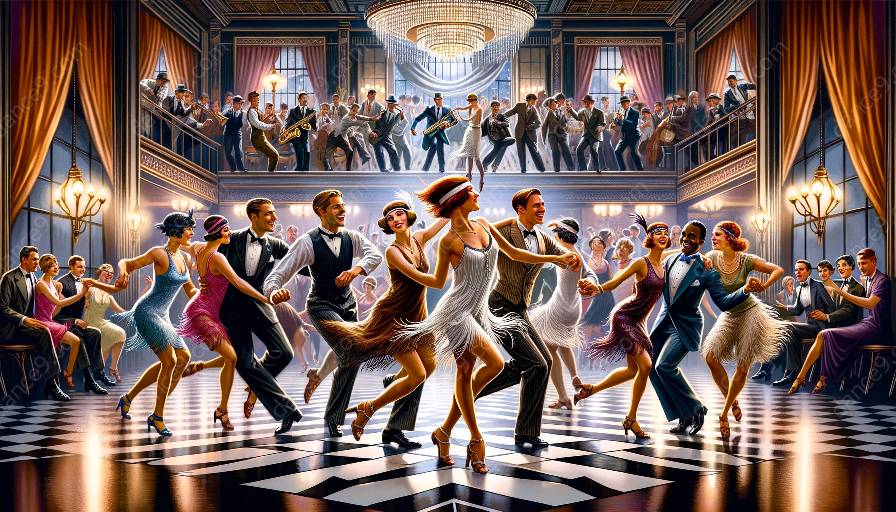Dance and music have an inseparable bond that is evident in the mesmerizing rhythm of Charleston and its impact on dance classes and performances. The relationship between music and dance is profound, playing a crucial role in shaping the experience and expression of movement. Let's explore the significance of music in the context of Charleston and how it enriches the art of dance.
Enhancing Rhythm and Timing
Music provides the foundation for rhythm, serving as the heartbeat of dance. In Charleston, the lively syncopated beats and jazzy melodies compel dancers to synchronize their movements with the music's tempo, creating a harmonious blend of sound and motion. The dynamic tunes of Charleston music challenge dancers to interpret the rhythm through their steps and body language, enabling them to internalize the groove and express it in their performances.
Expressing Emotion and Style
Music not only dictates the pace of dance but also influences the emotional expression and stylistic elements of the choreography. In dance classes, the choice of music can evoke a spectrum of emotions, from joy and excitement to nostalgia and longing, guiding dancers to convey these sentiments through their movements. Charleston's vivacious tunes provide a backdrop for exuberant and playful movements, infusing the dance with an infectious energy that captivates both performers and audiences.
Creating an Immersive Experience
When music and dance intertwine seamlessly, they create an immersive experience for both dancers and spectators. In Charleston dance classes, the fusion of spirited music and lively footwork transports participants to a bygone era, allowing them to feel the vibrant spirit of the dance style. Similarly, during performances, the right musical accompaniment can envelop the audience in the ambiance of the dance, compelling them to sway to the infectious rhythms and become engrossed in the storytelling through movement and music.
Cultivating Collaboration
The collaborative dynamic between music and dance fosters an environment of mutual respect and synchronization between dancers and musicians. In Charleston, where improvisation and syncopation are inherent, dancers learn to respond to the nuances of the music, while musicians adapt to the pacing and nuances of the choreography. This synergy promotes a profound partnership, enriching the artistic experience for all involved.
Conclusion
Music holds a pivotal role in dance classes and performances, particularly in the context of Charleston, where it amplifies the essence of dance through rhythm, emotion, immersion, and collaboration. The enchanting blend of music and dance in Charleston demonstrates the profound significance of music in shaping the artistry of dance, creating an exhilarating and unforgettable experience for dancers and audiences alike.













































































